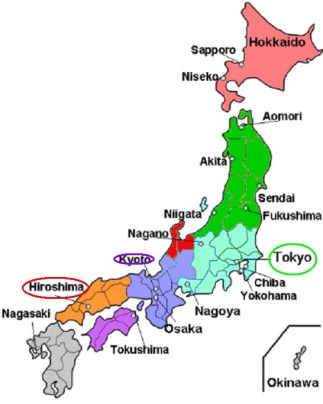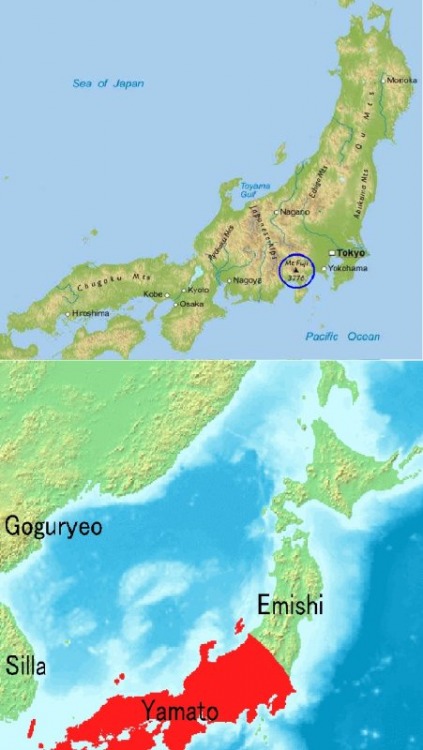Mount Fuji is the highest mountain in Japan, rising up to 12, 388 feet. This dormant volcano lies near the Pacific Ocean in Yamanashi, Shizuoka Prefectures, central Honshu, and about sixty miles west of Tokyo. Mount Fuji played and plays a huge part in the Japanese people's lives. It's beauty has been admired since very ancient times. It was and is often the subject of Japanese haikus. It was often worshiped as a sacred mountain. For Shintoists, Mount Fuji is sacred to the goddess Sengen-Sama and an embodiment of the very spirit of nature. Also, you were considered a fool if you didn't climb the volcano exactly once (no less, no more). The southern island of Kyushu and the southwestern peninsula of Honshu lie close to the Korean peninsula. It is in the region that the Japanese first immigrated into Japan in the third century BC, and it is in this region that the first state in Japan was established: the Yamato State on the Yamato peninsula (the southwestern most peninsula on Honshu).
Political Map

In the Tokugawa Shogunate period, the emperor lived in the imperial capital of Kyoto. However, the actual center of power, government, social life, and economy was Edo. This was where the Shogun lived and ruled the country. It's still the most important city in Japan. Yes, Edo is now known as Tokyo. Another important city was Hiroshima. Hiroshima sits at the southern east coast of Japan, on the main island of Honshu, at the mouth of a delta where the Ohta River streams down from the Chugoku mountains. This location assured it a future as a center of trade and opportunity from the medieval times through it's ongoing rebirth today. You may have also heard about Hiroshima from the bombing in World War II. Thousands of people died. The radioactivity both physically and psychologically. The side effects have still not disappeared. The ancient Japanese capital city of Nara Heijo-kyo was built in 710 AD, in a layout based on the Chinese grid system of streets and avenues. At the north part of the city was the Nara Palace, the center of the local government. The wealthier and higher status people, such as bureaucrats, lived closer to the palace. During its prime times, ancient Nara Heijo-kyo held a population of 100,00, making it the largest of the ancient cities of Japan.


